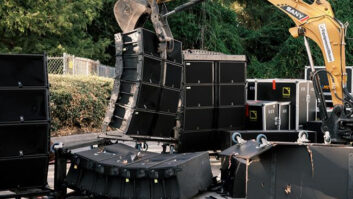Editorial coverage in business-to-business publications can be enormously influential – and doesn’t have to be difficult. Simon Croft explains how to get your pictures and stories onto the pages that matter.
How can you reach, say, 100,000 people with maybe only 10 emails? Answer, you write to 10 editors of websites or magazines. If you persuade all 10 of them to publish a story about your company, you should reach at least that many readers within a month.
Now that I have your attention, let’s put a few ‘ifs’ and ‘buts’ into this scenario. If your target audience is the public at large, you could potentially reach millions of people via the national media (TV, radio, press) but you will find it difficult to persuade them to feature you – perhaps even impossible without professional help.
But let’s assume you are aiming to reach a more specialised market, such as CIs. Your audience – even globally – is almost undoubtedly less than 100,000 but that doesn’t matter. If you’re clever, you can reach most of them and if you’re really persistent, you can do so repeatedly.
The most orthodox means of address to editors and reporters is the ‘press release’ – essentially a supplied story that you hope will be published in some form or another. Let me say straight away that there is vastly more to public relations than press releases, but if you’re not ready to engage a PR professional, knowing what makes for a publishable release is at least a start.
The two most important criteria about a press release are a) that the information contained is correct and b) that it is of interest to the target readership. The pitfalls of point a) are obvious, in that you are otherwise likely to alienate the press and your target audience. Criteria b) is a little more subtle. Suffice to say, the readers of Carp Breeder are no more interested in HDMI than the readers of IE Residential are in fish food. But there are categories of non-story that no-one on the planet wants to read. ‘Someone reports a strong interest after trade show’ is a prime contender for the waste bin.
Don’t waste words. Hyperbole, superlatives and repetition will simply be stripped out – and that’s on a good day. I have personally spiked stories because I was so incensed by the author’s guess that I couldn’t spot three different ways of telling me the device was 2U! (‘Taking up only a tiny 3.5in of height in a standard rackÖ’).
When emailing stories, it’s best to attach them as a Word document, as well as pasting the story into the body of the email message. That way, the recipient can see at a glance what the story is about but also has a clean copy to file. Avoid PDFs, especially ones with lots of fancy formatting. They might look good to you but they make extracting clean text much harder.
Try to make a high-quality image available. It’s a sorry admission but an average story with a great picture is likely to gain more space on the page than a great story with no picture – or one that’s too poor for publication.
That said, don’t expect to get thanked for sending out 8MB jpegs to journalists who didn’t ask for them. It’s much better manners to include a thumbnail image and a link to the website where the full-sized version is stored.
In fact, a little consideration for the people you write to will go a long way. Don’t simply bombard the press with endless material, especially if you don’t even know if they’re interested. This is all the more true in the run-up to major shows, when there may be literally hundreds of releases arriving at the same time.
A professional PR will monitor the press to see what coverage their clients are getting – and thank the press for any stories. They also tailor the material they send out to the titles they are targeting.
That’s probably more work than you can manage between your other tasks. Sadly, pressure of work is the biggest obstacle to ‘part-time PR’. But if you are aiming for publicity about your CEDIA Home Technology Event exhibit, please don’t wait until June!
A version of this article previously appeared in Residential Systems Europe.







